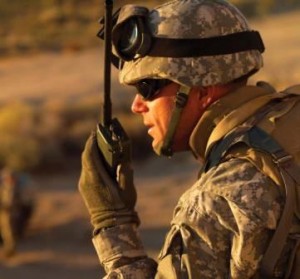Let’s say you are a 22 year old male in the military and you’re not great at PT. Which branch of the service would give you the easiest chance at passing the PT test? Let’s compare each branch and see what it would take to complete the bare minimum.
US Army
Standards are found here. To pass you would need:
- 2 mile run in 16:36 (16 minutes, 36 seconds)
- 40 push-ups in 2 minutes
- 50 situps in 2 minutes
- 22% body fat
US Air Force
Standards are found here.To pass the Air Force PT test you would at least need:
- 1.5 mile run in 13:36 (13 minutes, 36 seconds)
- 33 push-ups in 1 minute
- 42 sit-ups in 1 minute
- 39 inch or less waist
Note: The numbers above are bare minimum for each event and would actually be considered a failure. You need to do better in at least one of the other categories to pass the test.
US Navy
Standards are found here.
- 1.5 miles run in 13:30 (can be run on treadmill) or at commander’s discretion: 500 yd swim in 13:00, eliptical for 14 minutes, or stationary bike for 14 minutes
- 37 push-ups in 2 minutes
- 46 sit-ups in 2 minutes
- 23% body fat
US Marines
Standards are found here.
For the Physical Fitness Test portion:
- 3 mile run in 28:00 minutes
- 3 pull-ups
- 50 sit-ups
Note: Like the Air Force, you must do better than the minimum in at least one of the events to pass the entire test, as it works on a point system and the minimum for each area is not sufficient.
For the Combat Fitness Test portion:
- Run 880 yard Movement to Contact course in 4:13
- Lift 30 pound ammunition can from shoulder height to overhead 33 times within 2 minutes
- Complete 300 yard Maneuver Under Fire shuttle run course in 3:58
Result: US Navy has the Easiest PT Test
Comparing everything together, the Navy has the easiest PT test, due to the lower requirements, and range of options available to complete the run portion (treadmill, bike, swim, etc).
Run Times
We can compare the run times as a one mile pace:
| Service | One Mile Pace |
| Army | 8:18 |
| Air Force | 9:04 |
| Navy | 9:00 |
| Marines | 9:20 |
The Air Force has the slowest one mile pace. But while the Navy is just four seconds faster, they can run their test on a treadmill. This gives you a significant advantage, allowing you to simply stay on the treadmill at a set pace rather than pace yourself on a track through the entire test.
The Marines have the hardest test, having to keep a 9:20 pace for three miles!
Easiest run time: Navy
Push-Ups
| Service | Push-Ups |
| Army | 40 |
| Air Force | 33 |
| Navy | 37 |
| Marines | n/a |
The Army requires the least amount of push-ups for any service.
Sit-Ups
| Service | Sit-Ups |
| Army | 50 |
| Air Force | 42 |
| Navy | 46 |
| Marines | 50 |
The Air Force requires the least amount of sit-ups. The Navy is not far behind.
How the PT Test Impacts Promotion
While this review of service PT tests showed that Air Force and Navy tests were the easiest, it is important to note how each branch factors these tests into promotions.
From my experience, the Army and Marines place high importance on PT performance. So if you got the minimum scores listed above, you would be looked at poorly on a performance report.
However, Air Force and Navy are typically pass/fail with their PT tests. As long as you are passing the test, your supervisor will be happy. You can still get a glowing performance report if everything else with your work is stellar.
How PT is Integrated into Daily Work
Another factor to consider with these tests is how often you can work out as part of your normal duty day. Army and Marines will provide more time during work hours to run and stay fit. They will have more challenging programs which will likely keep you in shape.
The Air Force has improved in this area, and some squadrons have good PT programs. But you can not expect a Navy or Air Force unit to keep you in top shape like a Marines unit would. You will have to do more on your own to stay in shape.
Keep the big picture in mind when choosing which service to join, and which PT test seems the easiest!
 If you’re enlisted and want to become an officer, I have a plan for you. Get out when your enlistment is up. Apply to a university with an ROTC program. Use
If you’re enlisted and want to become an officer, I have a plan for you. Get out when your enlistment is up. Apply to a university with an ROTC program. Use 
